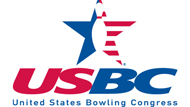USBC retains static weight specification
July 06, 2011

ARLINGTON, Texas – After completing a comprehensive research study, the United States Bowling Congress will retain its current specifications for static weight limits in its approved bowling balls.
The recently-finished study showed that if the current static weight limits were eliminated or increased, the typical three-phase motion of bowling balls as they travel down a lane (skid, hook, and then roll) would be significantly altered. A fourth phase of unpredictable motion begins to occur that would cause problems for bowlers and likely have an undesirable effect.
“Our research showed that bowling balls with more than the USBC-allowed amount of static weights will skid, hook, roll, then either start to hook again or fade away from the pocket,” said USBC Managing Director of National Governing Body Neil Stremmel. “That type of motion would hinder bowlers and pro shop operators because bowling balls would not have appropriate entry angle into the pins and bowlers would not know how their bowling balls would react.”
Static weights consist of top, bottom, finger, thumb and side weights. Current USBC specifications allow a maximum 3 oz. of top or bottom weight, and 1 oz. each of side, finger or thumb weight.
Led by USBC Research Engineer Nicki Mours, the USBC research team undertook the study to address concerns in the bowling industry that static weights are no longer relevant with today’s high-performance bowling balls that are affected more by ball dynamics and surface alteration. Before making a decision to modify, eliminate or keep the specification, USBC research engineers began a formal study to evaluate its research data and come to its conclusions.
“Our research proved that the current USBC static weight limits are still valid, even in this age of high-tech bowling balls,” Stremmel said. “While static weights do have a minimal effect on bowling ball motion within the current window, our research data and analysis shows that having no limit can have a negative effect on ball motion. Therefore USBC will not change the specification.”
Testing for the research study was conducted from November 2010 to May 2011 at the International Training and Research Center (ITRC) on the International Bowling Campus in Arlington, Texas, using the bowling robot E.A.R.L. (Enhanced Automated Robotic Launcher) designed to be able to consistently simulate any type of bowling style with an accuracy and consistency on the lanes that no human bowler can achieve
The research findings were presented by USBC engineers at the International Bowl Expo in Grapevine, Texas, and the USBC Convention in Arlington.
Visit BOWL.com/equipandspecs for more information about USBC research initiatives and the ITRC.
The recently-finished study showed that if the current static weight limits were eliminated or increased, the typical three-phase motion of bowling balls as they travel down a lane (skid, hook, and then roll) would be significantly altered. A fourth phase of unpredictable motion begins to occur that would cause problems for bowlers and likely have an undesirable effect.
“Our research showed that bowling balls with more than the USBC-allowed amount of static weights will skid, hook, roll, then either start to hook again or fade away from the pocket,” said USBC Managing Director of National Governing Body Neil Stremmel. “That type of motion would hinder bowlers and pro shop operators because bowling balls would not have appropriate entry angle into the pins and bowlers would not know how their bowling balls would react.”
Static weights consist of top, bottom, finger, thumb and side weights. Current USBC specifications allow a maximum 3 oz. of top or bottom weight, and 1 oz. each of side, finger or thumb weight.
Led by USBC Research Engineer Nicki Mours, the USBC research team undertook the study to address concerns in the bowling industry that static weights are no longer relevant with today’s high-performance bowling balls that are affected more by ball dynamics and surface alteration. Before making a decision to modify, eliminate or keep the specification, USBC research engineers began a formal study to evaluate its research data and come to its conclusions.
“Our research proved that the current USBC static weight limits are still valid, even in this age of high-tech bowling balls,” Stremmel said. “While static weights do have a minimal effect on bowling ball motion within the current window, our research data and analysis shows that having no limit can have a negative effect on ball motion. Therefore USBC will not change the specification.”
Testing for the research study was conducted from November 2010 to May 2011 at the International Training and Research Center (ITRC) on the International Bowling Campus in Arlington, Texas, using the bowling robot E.A.R.L. (Enhanced Automated Robotic Launcher) designed to be able to consistently simulate any type of bowling style with an accuracy and consistency on the lanes that no human bowler can achieve
The research findings were presented by USBC engineers at the International Bowl Expo in Grapevine, Texas, and the USBC Convention in Arlington.
Visit BOWL.com/equipandspecs for more information about USBC research initiatives and the ITRC.





